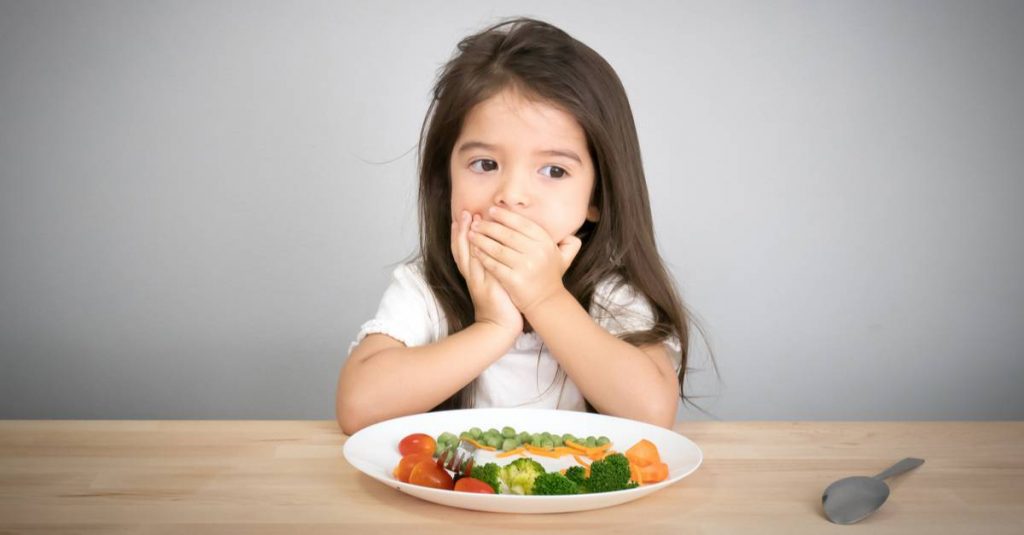
At one point or another all moms struggle with their kids’ eating. Kids eat well, then they stop; their food preferences change in the blink of an eye; some are little foodies; others eat to survive. Feeding becomes a job — often a hard one. Not all moms, however, really know their child’s physiology, the physiological stages of their development and therefore, do not always correctly approach their dietary regime. Here are some points to keep in mind as your child develops:
Understand Kids’ Eating Patterns
- The first year of your baby’s life, she grows very fast. By the end of the first year, an average baby almost triples his birth weight and is about 25 cm taller. Not everybody realizes that after such an intensive initial growth that little children grow much more slowly and naturally — so their calories needs and eating habits change accordingly. Children’s body proportions change, they need less calories, so to a lot of parents it looks like all of a sudden their children don’t eat enough. This is normal for ages 25 and if your kid keeps growing at the same rate as he did during the first year if his life, it is sign of a serious medical problem.
- Kids change their food preferences. Kids’ eating habits are quite different than the eating habits of adults. It is quite normal for a child to eat a certain food for days and state it is his most favorite — and then without any reason start disliking it. A kid can stop eating for days and this is normal, too. A child never consumes the same amount of food every day.
- Kids have a natural tendency to like sweets. The first taste they recognize is the taste of their mother’s milk or a formula – both are sweet. Moms should introduce different foods and different tastes gradually and persistently. At early ages, kids can be influenced to form a certain taste.
- Kids are suspicious about new foods. When you want your child to try some new food, be persistent but not aggressive and use your imagination if necessary. There will be resistance, but you have to keep introducing different textures, flavors, combinations of aromas and tastes. This is a way of building a strong foundation of healthy eating and living.
- Kids cannot eat three big meals a day, so do not expect them or force them to. Generally, kids eat as much as their body tells them to eat and at the end of the day their appetite considerably decreases.
- Not all children like to eat. Thanks to you, they are developing certain habits and tastes and you should always keep this in mind. Kids are like the adults – some eat because they like to and enjoy the food; others eat just because they have to.
Be Playful with Food Presentation
No matter in which category your little one falls, you can try to make feeding a bit more amusing and easy by experimenting and “playing” with the colors of different foods. It has long been known that colors affect people in different ways, but lately, it has also been proven that the color of food we consume can cause different reactions from the body. Children are no exception.
White food products – milk and dairy products, rice, cauliflower, etc., have calming effect and help the body get rid of different toxins.
Purple foods – grapes, plums, eggplant, etc. are very rich in antioxidants which help protect the blood vessels and the sight.
Green colored foods – greens, lettuces, green beans, peas, etc., are extremely beneficial to the brain, they increase activity and reduce stress. The chlorophyll, which gives the green color, stimulates the production of erythrocytes and boost the immune system.
Red foods – red peppers, tomatoes, strawberries, etc. stimulate the overall metabolism. However, if they are overused can cause hyperactivity.
Orange foods – peaches, pumpkin, oranges, carrots, etc. restore the cells of the nervous system, boost the good mood, help overcome fatigue and headaches.
Yellow foods – pineapple, lemon, banana, yellow cheese, egg yolk, etc. stimulate the digestive system, improve appetite, boost energy and help the body release toxins.

Read Next | Find a Babysitter in the NYC Metro Area
Renata Shishkova is a mother and a grandmother, a writer and an artist from Toronto, Canada. She holds a Master’s degree and has a strong interest and background in nature, healthy living and wellness, and the challenges of parenting.
Like what you read? JOIN the Mommybites community to get the latest on FREE online classes, parenting advice, events, childcare listings, casting calls & raffles, and our Parents With Nannies Facebook group. SIGN UP NOW!
The views and opinions expressed on this blog are purely the blog contributor’s. Any product claim, statistic, quote or other representation about a product or service should be verified with the manufacturer or provider. Writers may have conflicts of interest, and their opinions are their own.



